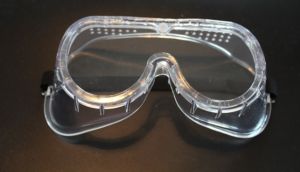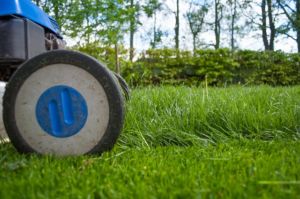Spring is a time of renewal, and it’s a great time to get out in your yard and get things ready for summer. Yard work can be a healthy and satisfying form of exercise, but it can also lead to injuries. Most yard work related injuries can be prevented with some preparation and care. Here’s how to stay safe while prepping your yard this year:
Take Care with Ladders
It’s not just the lawn and gardens that need your attention; clogged gutters and missing shingles may also be on your to-do list. Unfortunately, falls from ladders and roofs are responsible for more than 164,000 injuries in the U.S each year. You can keep yourself from becoming a statistic by always following best practices when setting up and using your ladder:
- Check that all of your ladder’s safety features are in good condition
- Place the ladder on level, even ground, or use a ladder meant for uneven conditions
- Make sure the feet of the ladder are all the way down, and the ladder is stable before you get on it
- Check all rungs for moisture or dirt and wipe them down if needed
- Use ladders only in well-lit areas
- Keep three points of contact with the ladder at all times ( two feet, one hand, two hands, one foot)
- Incline the ladder at a safe angle and use ladders meant for the job at hand, don’t overextend a too-short ladder
- Do not move the ladder while you or another person is on it.
If you are going to be climbing around on your roof, make sure you do so on a day when the roof is dry and not slick. You should always wear shoes with good grip and a safety harness, appropriately secured. To be on the safe side, you could also consider hiring a licensed and insured professional who already owns this safety gear. Investing in gutter covers could also save you from having to get up on the roof.
Wear Safety Equipment
Treat yard work the same as you would a woods project and wear the correct personal protective equipment. Many yard work injuries are caused by debris in the eyes, heavy things smashing toes, and other preventable mishaps.
Before you get started, take a moment to assess the kinds of tools you’ll be using and what the potential risks may be. If you are using a chainsaw, hedge clipper, or even hand clippers, you could end up with debris flying back towards your face and eyes. It’s always advisable to wear safety goggles during these activities. Lawnmowers and similar types of equipment can shoot debris like rocks and hard dirt clods out at your legs. Long work pants can prevent these kinds of injuries.
Gloves can protect your manicure, and keep your hands safe from scratches, insect bites, and contact with harmful microbes. Long sleeves can also protect your arms while you are working with thorny plants or small branches that could catch you. Always, always wear closed-toed shoes while doing yard work. They don’t have to be steel-toed. Any sturdy closed-toed shoe will protect your feet from injury. Thick soles with good grip can protect you from slips and falls and injuries from sharp objects underfoot.
Maintenance Equipment Properly
Some of the most common injuries in the garden are caused by lawnmowers. These machines require a lot of upkeep, from changing fuel to sharpening the blades. Always read your owner’s manual and follow instructions to the letter. Ensure you are wearing protective equipment if your hands are going to be around sharp blades or a hot motor. Let the mower cool down for a while before you change the fuel or check the oil. Perform maintenance regularly to keep the mower in safe working condition.
Always make sure that chainsaws, hedge clippers, weed whackers, and other motorized tools are clean and in good working order before you use them. Use ergonomic tools whenever possible and take breaks when you are using a tool that vibrates. Prolonged exposure to vibration can cause muscle cramps, especially if you aren’t holding the tool correctly. Wear proper protective equipment when using or maintaining these tools. Always store them safely and keep children and pets away from them when they are out or in use.
Treat Yard Work Like A Workout
Pulling a stubborn weed or twisting wrong while bending over can lead to muscle strains and sprains. These are more likely to happen if the muscle group is stiff. Treat yard work as a workout and warm-up and stretch before you begin. This will help to prevent injury and reduce soreness after a strenuous day. You should also stretch out after your yard work is done. When stretching, do a few rounds of 20 second long stretches that focus on different muscle groups. Holding a static stretch longer than this can cause strain.
Staying hydrated and taking breaks can also prevent your muscles from becoming strained. You should never work yourself to exhaustion, skip meals or skimp on water. Take good care of yourself and finish your work on a different day if you need to.
Treat Injuries Right Away
Any burns or bleeding injuries should be evaluated by a doctor. If you think you’ve injured a muscle or joint, stop working immediately and apply ice. Use cold therapy for twenty minutes at a time and plan on applying it repeatedly for the next couple of days. Ask your doctor before using cold or heat therapy if you have diabetes or circulation problems.
If you are still in pain or stiff after a couple of days and you live near Florence or Independence, KY, give us a call. At Allstar Chiropractic, we offer cutting-edge treatments for both orthopedic and soft tissue injuries. We can get you feeling like yourself again so you can get back to caring for your yard.







